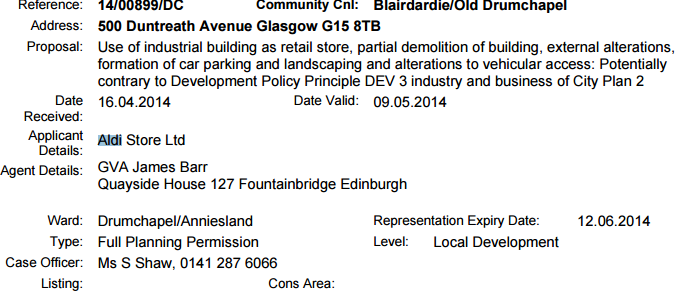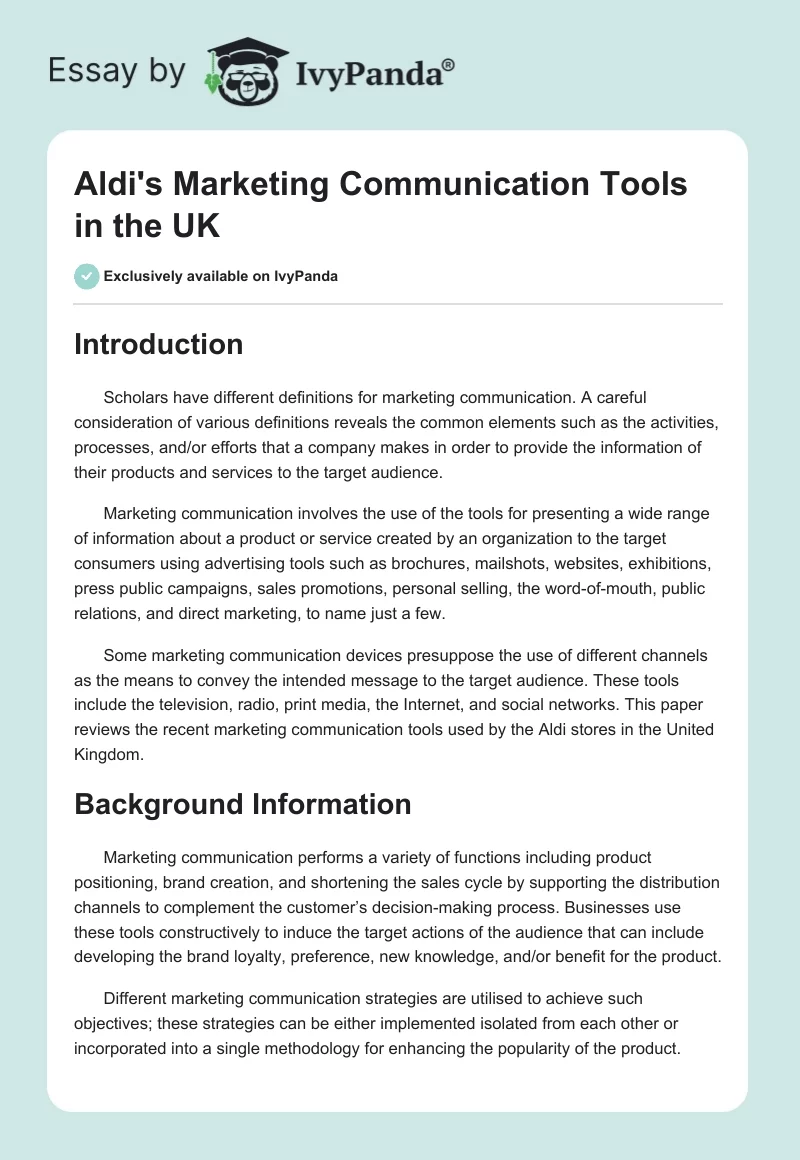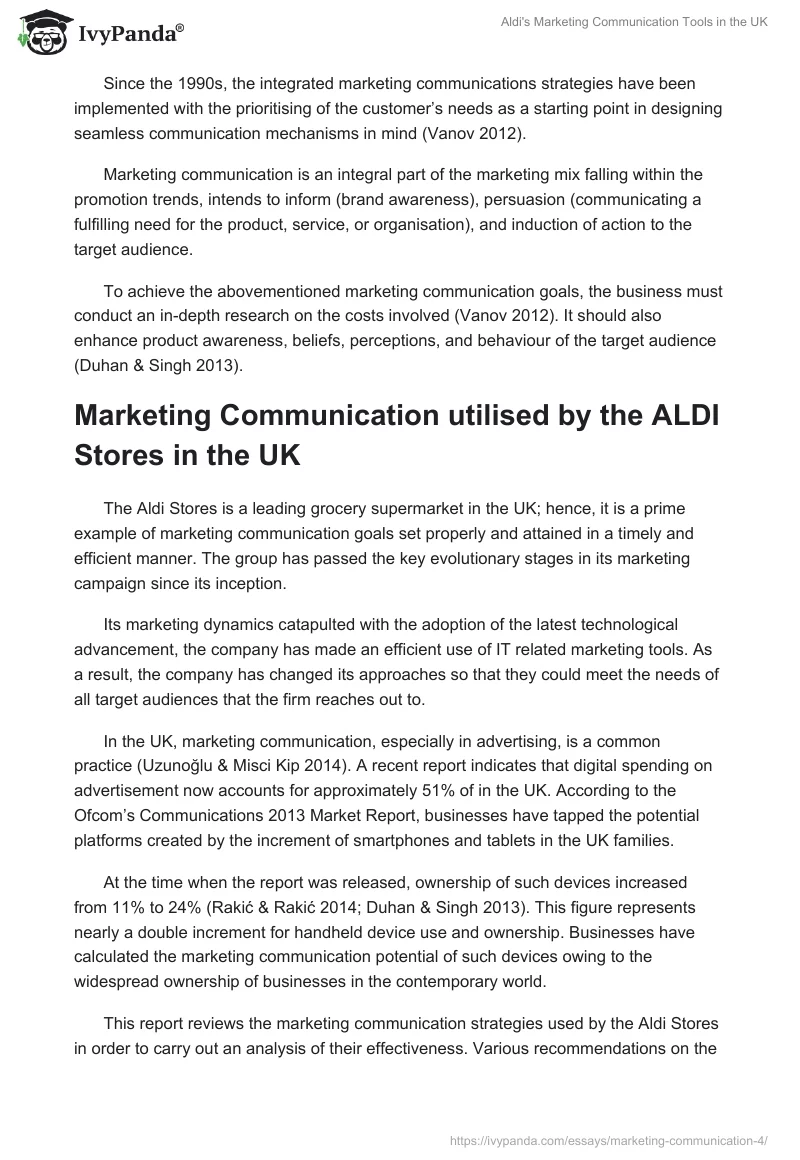Introduction
Scholars have different definitions for marketing communication. A careful consideration of various definitions reveals the common elements such as the activities, processes, and/or efforts that a company makes in order to provide the information of their products and services to the target audience.
Marketing communication involves the use of the tools for presenting a wide range of information about a product or service created by an organization to the target consumers using advertising tools such as brochures, mailshots, websites, exhibitions, press public campaigns, sales promotions, personal selling, the word-of-mouth, public relations, and direct marketing, to name just a few.
Some marketing communication devices presuppose the use of different channels as the means to convey the intended message to the target audience. These tools include the television, radio, print media, the Internet, and social networks. This paper reviews the recent marketing communication tools used by the Aldi stores in the United Kingdom.
Background Information
Marketing communication performs a variety of functions including product positioning, brand creation, and shortening the sales cycle by supporting the distribution channels to complement the customer’s decision-making process. Businesses use these tools constructively to induce the target actions of the audience that can include developing the brand loyalty, preference, new knowledge, and/or benefit for the product.
Different marketing communication strategies are utilised to achieve such objectives; these strategies can be either implemented isolated from each other or incorporated into a single methodology for enhancing the popularity of the product.
Since the 1990s, the integrated marketing communications strategies have been implemented with the prioritising of the customer’s needs as a starting point in designing seamless communication mechanisms in mind (Vanov 2012).
Marketing communication is an integral part of the marketing mix falling within the promotion trends, intends to inform (brand awareness), persuasion (communicating a fulfilling need for the product, service, or organisation), and induction of action to the target audience.
To achieve the abovementioned marketing communication goals, the business must conduct an in-depth research on the costs involved (Vanov 2012). It should also enhance product awareness, beliefs, perceptions, and behaviour of the target audience (Duhan & Singh 2013).
Marketing Communication utilised by the ALDI Stores in the UK
The Aldi Stores is a leading grocery supermarket in the UK; hence, it is a prime example of marketing communication goals set properly and attained in a timely and efficient manner. The group has passed the key evolutionary stages in its marketing campaign since its inception.
Its marketing dynamics catapulted with the adoption of the latest technological advancement, the company has made an efficient use of IT related marketing tools. As a result, the company has changed its approaches so that they could meet the needs of all target audiences that the firm reaches out to.
In the UK, marketing communication, especially in advertising, is a common practice (Uzunoğlu & Misci Kip 2014). A recent report indicates that digital spending on advertisement now accounts for approximately 51% of in the UK. According to the Ofcom’s Communications 2013 Market Report, businesses have tapped the potential platforms created by the increment of smartphones and tablets in the UK families.
At the time when the report was released, ownership of such devices increased from 11% to 24% (Rakić & Rakić 2014; Duhan & Singh 2013). This figure represents nearly a double increment for handheld device use and ownership. Businesses have calculated the marketing communication potential of such devices owing to the widespread ownership of businesses in the contemporary world.
This report reviews the marketing communication strategies used by the Aldi Stores in order to carry out an analysis of their effectiveness. Various recommendations on the best way, in which the organisation can effectively use this function in the nearest future, are also highlighted.
The bottom line of Aldi Stores’ robust marketing communication techniques is to let every customer get the products of the best quality possible, i.e., fresh fruits, vegetables, meat, and electronics among other products at affordable prices. The organisation uses specific marketing communication tools such as the AIDA model to achieve this goal (Duhan & Singh 2013)
The aim of the AIDA Model is to sensitise the consumers to the products and services of the company. This strategy seeks to induce the desire for the products thereby encouraging the customers to take the necessary action to purchase the goods. Guided by the AIDA model, the Aldi Stores has several communication tools and channels discussed below.
Above-the-Line Promotion
Television Ads
In an attempt to increase its market share, the company has geared its promotional activity towards the use of vigorous marketing communication campaigns in order to make the customers acknowledge the quality of its products through providing outstanding services and informative messages (Kellezi 2014).
The above-the-line promotions are aimed at reaching many consumers using the methods such as the television, journals, and the press among others.
Although the specified tools are rather tricky when used for attracting the target audience, the Aldi Stores is likely to succeed in its endeavours, as it uses the Like Brands Campaign (LBC) that features around twenty television advertisements designed to promote different products. The technique involves using a side-by-side association of a famous brand and the Aldi Stores brand product.
The motto used by the stores is ‘Like Brands-Only Cheaper’ to let the customers consider getting the same quality for less expenditure. This marketing communication tool has worked effectively for the Aldi Stores to a point where the customers have developed a strong emotional attachment to the brand.
In addition, the advertisements convey humorous messages that help building trust and emotional connection with the consumers (Kellezi 2014).
Printed Leaflets
The marketing team acknowledges the power of spreading information as a means of enhancing the brands promotion campaign (Tewari & Misra 2015). The target audience is assisted to know the availability of products offering the same value and of similar quality yet for a lower price at Aldi Stores than in other outlets providing similar products.
This information serves a twofold purpose that includes allowing the customer to save some amount of money and the company to establishing brand loyalty in the stores. The fundamental effects of the strategy in question is that customers who are new to the stores wish to see if the information contained in the leaflets are truthful or misleading.
After the new customers are convinced that the leaflet information is accurate, an unshakable customer trust and loyalty is built (Tewari & Misra 2015). People have a tendency of believing in businesses that help them save money by offering them cheaper goods. This idea has propelled the Aldi Stores towards unmatched success and perpetuated its reputation as the company that cares about its clients.
In Store Posters and Newspapers
In-store media is an important marketing communication tool that influences decisions at the point of sale. The in-store environment has considerably been shown as a vital for marketers to manage as it can induce unplanned purchases. A recent study reveals that retailers have increasingly become aware of the significance of in-store advertising.
Notable examples include the use of videos at the location of different products within the stores that communicate to the customers thereby stimulating the need to buy them. Aldi uses in-store posters to help in stressing the significance of the swap and save phenomenon. Customers shopping inside Aldi are challenged to try swapping at the point of purchase.
The effectiveness of in-store marketing communication has been contributing to the sales volumes of many supermarkets where individuals make impulse-buying decisions (Tomše & Snoj 2014). Other in-store communications include displays and packaging. To extend the Like Brands campaign, the Aldi Company makes use of newspaper advertisements to reach masses nationwide.
This channel helps the group to display various categories of the high quality products available at its stores. In addition, newspapers communicate the ‘swap-and-save’ message through letting customers compare the amount that they are capable of saving if they swap at Aldi Stores.
This strategic message provokes customers to try swapping; in the process, an added sale is recorded. Seeing that the specified model allows for a more efficient allocation of financial resources for most customers, the latter will definitely continue swapping to continue saving (Tomše & Snoj 2014).
Below-the-line Promotions
These promotional methods aim at engaging customers into following specific buyer behavioural patterns through specific audience targeting. These methods provide businesses with a high degree of control of communication tools in order to affect the target audience.
Public Relations
Public relations are a marketing communication tool that serves an important role in marketing. On realisation of this fact, Aldi Store has used it to demonstrate the high quality of its products through its party endorsements. The store has placed more than 1000 of its products in numerous awards with the aim of attracting wider public attention (Young & Merritt 2013).
This platform has earned the firm’s various awards. For example, in 2012, Aldi Store emerged as the best supermarket in the region.
It has also secured the Pisza and Grocery awards among others. Moreover, Aldi products have been publicly endorsed via TV channels as being of high quality and the best reward for people’s money. Through hard work and innovation, Aldi has gained a substantial media coverage by high profile media reporters.
This widespread public relations activity performs an extended function of exposing the public to the organization’s brand and products, which, in its turn, facilitates commanding unshakable loyalty from customers. Effective PR and media relations have been empirically shown to create adequate press coverage and brand recognition (Lund & Marinova 2014).
The seasonal messages including swap-and-save were conveyed during numerous media coverage that serves as a stepping stone for Aldi Stores to attract new customers and create a solid base of clients. The platform was utilised to showcase the target customers the savings available through shopping at Aldi.
Following the awards and media coverage, since 2013 to date it has seen over 100% sales increments boosted by the new loyal customers. Other public promotions done by Aldi include the seasonal back to school and Christmas campaigns that have led the store to achieve unmatched success (Lund & Marinova 2014).
Social Media and Targeted E-Mails
The significance of social media in marketing communication has received considerable attention from both academics ad practitioners over the past decade. Social media platforms including Facebook and Twitter serve the function of instant sharing of content and providing widespread feedback between senders and recipients of content.
Business have tapped the commercial capability of social media and incorporated it in marketing (Young & Merritt 2013). Aldi Stores runs both Facebook and Twitter accounts. Through these channels, Aldi interacts with customers, who are ready and willing to provide feedback and opinions regarding the usefulness of their products.
Social media users, in their turn, tend share the content including photos and videos of experiences of different places including supermarkets, coffee shops and movies among others, thus, promoting the company’s goods.
For instance, Coca-Cola runs a lot of marketing communication campaigns with the use of Facebook, Instagram and Twitter, whereby users are encouraged to share pictures (selfies) of their best moments enjoying the soda produced by the company (Lund & Marinova 2014).
The efforts of customers and the willingness to share best experiences at Aldi Stores through social networks have played a major role in convincing other social media users to try using the same products that they have. It has been revealed that the proper usage of the power of social media can open ample opportunities for businesses.
For example, the company provided a provision for Facebook users to exchange cybernetic romantic cards with their friends. This campaign triggered a rapid rise in the number of Facebook groups such as the Aldi page. Those who liked the page had the opportunity to view what Aldi is, what products the company offers, where it is located, and when they can pay a visit to Aldi.
In addition, the viral following and sharing allowed by social media can help increase awareness for a brand miraculously fast. However, a failure to manage social media as a marketing communication tool can result in immeasurable damage to the brand name.
Considering customers sharing photos of Aldi Stores for the wrong reason such as product fault or other sentiments, one will be able to estimate the damage that the organization will suffer in the worst case scenario. This fact reminds marketers to exercise their control over the situation and limit social media engagement in the scenarios that adversely damage the brand name (Lund & Marinova 2014).
The Aldi Stores marketers make use of direct e-mail messages to their subscribers about particular products, new arrivals, and change of prices among other related information. For instance, their mode of using the swap-and-save seasonal messages including Pancake Day among others presupposes sending direct emails.
The messages may involve reminding the customers of an important day like Valentine and Mothers’ day among others in a bid to encourage the customers to prepare to buy or place orders for cakes or other related products. Aldi also engages customers to visit its revamped website, which displays many promotional messages (Young & Merritt 2013).
For instance, Aldi created a micro-website (www.likealdi.co.uk) for the purpose of encouraging customer engagement. It offered an opportunity for customers to voice their opinions concerning the Like Brands TV campaign. The site enabled the company to evaluate its effect on its target audience by conducting an analysis of the website (Lund & Marinova 2014).
The website also used as a recruitment portal to increase the probability of selecting the right employees for improved job placement. This shift from traditional communication strategies is in line with the behaviour of consumers today, where people search for information online.
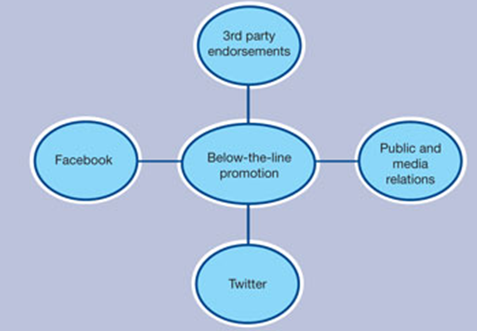
Figure 2: A diagram showing the ‘Below-the-Line-Promotion’
Recommendations for Aldi’s Marketing Communication Strategy
Integrating Marketing Communication Functions
Integrated marketing communication (IMC) is the idea presupposing that a business promotional activities need to be coordinated so that complementary results could be achieved (Quesenberry, Coolsen, & Wilkerson 2012). The different MC tools that a business utilises invite a number of opportunities; however, if the process occurs in mere isolation, achieving an intended effect can be difficult.
Affecting the purchasing behaviour of customers can be tricky if dedicated programmes fail to work in a seamless coordination. In this regard, the simple promotion efforts of Aldi that seem to occur in isolation can help the company achieve even greater success if the integrated approach is incorporated into the company’s set of strategies.
For instance word-of-mouth (WOM) marketing is a viable strategy that is based on the power of certain ideas and opinions in influencing customer purchasing decisions (Quesenberry, Coolsen, & Wilkerson 2012). With peer-to-peer communication acting as advice, customers have the tendency to follow cues and recommendations of their friends, family and media during shopping.
Aldi has not relied on this crucial marketing communication tool; therefore, it is recommended that, besides using other promotional tools aforementioned, the company should consider utilising the WOM technique.
In fact, researchers argue that WOM is more effective in influencing consumers than traditional advertising channels despite the fact that it is a low-cost initiative. Consumers themselves are motivated to spread information through word-of-mouth channels based on their satisfaction of dissatisfaction with products or services.
Besides having a strong customer loyalty, Aldi Stores has been known for delivering quality products for many years now; thus, engaging these loyal customers in WOM marketing communication can trigger great positive effects.
Digital Media, Online Presence
The advent of the internet has reshaped marketing communication with its effect on people’s interactivity (Young & Merritt 2013). An integration of physical marketing communication strategies with the Internet can transform the business into an immense success. The Internet has revolutionised the process of communication, enhancing the ability of people to collect, process and share information.
Customers are also enabled to communicate with each other and, thus, create powerful avenues through which product information can spread and reach even more people and products can become absorbed by the wider market in a more cost-effective manner (Young & Merritt 2013). Aldi needs to utilise the social media marketing communication platforms in customer relationship management (CRM).
CRM is an aspect that sprouts from synergised strategic planning and integration of marketing communication. Customer loyalty is an important relationship that businesses ought to build if long-term success is to be achieved. These relationships can only be established with the use of robust techniques including the modern practice of e-commerce facilitated by the online presence (Magee 2013).
It has been noted that there has been a considerable the shift from product-centric to customer-centric marketing strategies owing to the fact most of the products offered by many businesses are almost similar to each other, with only slight generic differences allowing customers to distinguish between them. As a result, marketers seem to be concentrated on the target audience rather than on their products.
As much as products resemble each other, customers will always be motivated differently to purchase preferred brands (Magee 2013). The Aldi Stores needs to base its marketing communication strategies on this fact in order to gain a competitive edge over other stores in the same market.
In this regard, the firm has a duty to filter the information that goes to the consumers, who, in turn, share it with their peers. Positive peer-shared messages will have a healthy effect on sales for Aldi Stores.
The CRM strategies comprise two crucial components: the level of competence for the firm to manage customer database that entails data collection, analysis, dissemination and application of the information. The customer database provides the business with the information it requires to understand effectively, target and segment its customers (Racolţa-Paina & Luncaşu 2014).
This way allocation of necessary resources for the purposes of implementing customer-centric strategies, building customer loyalty, creating customer value, and in turn scaling firm’s profitability. Secondly, relationship marketing that entails development and maintenance of fruitful long-term relationships.
Establishing a long-term integration of marketing communications in a way that ensures successful dissemination of information from the sender (marketer) through all points of contact with the recipients (consumers) is the ultimate objective of any firm (Racolţa-Paina & Luncaşu 2014; Quesenberry, Coolsen, & Wilkerson 2012).
The rapid growth of new media has challenged pre-existing business models and has enabled organizations to manage their interactions with customers. The Aldi Stores should utilise CRM strategies to establish customer database that will help them understand what customers need and develop positive and robust interactions. To achieve e-transformation, online presence must be established for the Aldi Company.
Viral Marketing
Viral marketing is an approach that integrates with the word-of-mouth promotion by capitalising on digital media especially social networks (Levy & Gvili 2015). Social media has given opportunity for users to create and share content, a practice commonly referred to as journalistic engagement, whereby individuals are capable of capturing the events that they are witnessing and reporting about them to the online community.
Shared content stimulates debates and additional sharing to reach more people in the network. The implementation of the idea is seen in viral marketing in modern businesses (Levy & Gvili 2015). The customers’ desire to share experiences with their peers can be utilised as a key platform for marketing communication.
The Aldi Stores can effectively use this strategy basing on its strong customer loyalty by engaging youths in spreading messages that resonate with the target audience. Marketers use referral links that are embedded in social networks to lead new users to reach the company’s web based promotional messages.
As users share content with their fiends, the link appears with luring information that catches the attention of the new users. Marketers at the Aldi Company need to design viral marketing campaigns, which include seeding emails, online advertising and referral links that once initiated should be properly managed to ensure that new users are able to access the intended information (Quesenberry, Coolsen, & Wilkerson 2012).
Events based marketing and Guerrilla Marketing
Many firms make use of major events that can be appropriate for marketing communication. Researchers argue that events enhance building of on-on-one relationships with consumers (Luxton, Reid, & Mavondo 2015). Events occur in various forms including cultural, sports, music festival, cause-related marketing, trade fairs, and lifestyle marketing among others.
Aldi Stores can make use of event-based marketing to get in touch with the target audience as well as demonstrate the range of their products and services (Tălpău 2014). For instance, it can use sports events by sponsoring uniform for a young team with its brand name embedded on them.
This practice serves the purpose of letting the public learn about the existence and location of a particular store in town that offers high quality products besides having proactive CSR programmes (Chen et al. 2015). This message goes beyond the identification of the target audience as the event can be televised to pass the information even across borders.
Notable firms that have utilised events as the key tools for their products promotion include Pepsi and Coca-Cola, Nike, and Chevrolet among others. These companies operate on a global scale. Some of them, such as the Coca-Cola Company, owe their great success to the utilisation of event-based advertising.
Proposed Budget for the Recommended Marketing Communication
In-Store Packaging
Aldi Stores does not engage in a lot of in-store media activity apart of creating the banners that the organization prefers referring to as swap-and-save advertisements. The most crucial in-store marketing communication function is the one done with in-store packaging.
Despite the rest of promotional efforts of the company, including television advertising, public relations and social media, the fact that it is the product packaging that leaves a permanent impression on the customers as they browse through the goods available is beyond disturbing (Castronovo & Lei 2012). Other leading stores have employed robust marketing communication campaign with the help of packaging.
The message contained in a package must have the staying power big enough for the customer to remember about the product after purchase, whereas those video ads and social media images are erased from the customers’ memories almost instantly. The Aldi Company can increase brand awareness by embedding communicative information on products packages (Fulgoni & Lipsman 2015).
Many supermarkets have recently been seen rebranding products from other manufactures including water and beverages and putting informative messages on the new packages (Goneos-Malka, Grobler, & Strasheim 2013). This trend serves to create loyalty among buyers for the store where that product is bought. This behavioural marketing strategy encourages repeat sales (Lilleker 2015).
Conclusion
Marketing communication is one of the important tools that the marketing mix is comprised of. Firms can use a variety of marketing communications techniques to promote their sales. It is worth noting that the choice of these tools is contingent on various factors including costs, effectiveness and line of business among other audience related factors.
Traditional marketing communications tools have been challenged by the emerging digital media platforms that have revolutionised marketing communication. Firms need to learn how to integrate these tools effectively in order to achieve the goals set in the action plan.
Some traditional promotional campaigns are still in use today, but there is a need to include e-commerce and embrace social networking to attract more customers, as well build customer relationships.
References
Castronovo, C & Lei, H 2012, ‘Social media in an alternative marketing communication model’, Journal Of Marketing Development & Competitiveness, vol. 6 no. 1, pp. 117-136.
Chen, K, Chen, M, Liu, C & Huang, C 2015, ‘Integrated Marketing communication, collaborative marketing, and global brand building In Taiwan’, International Journal of Organisational Innovation, vol. 7 no. 4, pp. 99-107.
Duhan, P & Singh, A 2013, ‘Social media: a paradigm shift in integrated marketing communication’, Integral Review: A Journal Of Management, vol. 6 no. 2, pp. 1.
Fulgoni, G & Lipsman, A 2015, ‘Digital word-of-mouth and its offline amplification’, Journal of Advertising Research, vol. 55 no. 1, pp. 18-21.
Goneos-Malka, A, Grobler, A & Strasheim, A 2013, ‘Suggesting new communication tactics using digital media to optimise postmodern traits in marketing’, Communication, vol. 39 no. 1, pp. 122-143.
Kellezi, J 2014, ‘Trade shows: a strategic marketing tool for global competition’, Procedia Economics and Finance, vol. 9 no. 1, pp. 466-471.
Levy, S & Gvili, Y 2015, ‘How credible is e-word-of-mouth across digital-marketing channels?’, Journal Of Advertising Research, vol. 55 no. 1, pp. 95-109.
Lilleker, D 2015, ‘Interactivity and branding: public political communication as a marketing tool’, Journal of Political Marketing, vol. 14 no. 1, pp. 111-128.
Lund, D & Marinova, D 2014, ‘Managing revenue across retail channels: the interplay of service performance and direct marketing’, Journal of Marketing, vol. 78 no. 5, pp. 99-118.
Luxton, S, Reid, M & Mavondo, F 2015, ‘integrated marketing communication capability and brand performance’, Journal Of Advertising, vol. 44 no. 1, pp. 37-46.
Magee, R 2013, ‘Can a print publication be equally effective online? Testing the effect of medium type on marketing communications’, Marketing Letters, vol. 24 no. 1, pp. 85-95.
Quesenberry, K, Coolsen, M & Wilkerson, K 2012, ‘IMC and the effies: use of integrated marketing communications touchpoints among effie award winners’, International Journal Of Integrated Marketing Communications, vol. 4 no. 2, pp. 60-72.
Racolţa-Paina, N & Luncaşu, A 2014, ‘The sales force of multi-level marketing companies in the context of the marketing communications mix. case study: Avon Cosmetics Romania’, Proceedings Of The International Conference Marketing – From Information To Decision, vol. 7 no. 1, pp. 185-200.
Rakić, B, & Rakić, M 2014, ‘Integrated marketing communications paradigm in digital environment: the five pillars of integration’, Megatrend Review, vol. 11 no. 1, pp. 187-203.
Tălpău, A 2014, ‘Social media – a new way of communication’, Bulletin of the Transilvania University of Brasov. Series V: Economic Sciences, vol. 7 no. 2, pp. 45-52.
Tewari, S & Misra, M 2015, ‘Information and communication technology: a tool for increasing marketing efficiency’, International Journal of Information Technology & Management, vol. 14 no. 2, pp. 215-231.
Tomše, D & Snoj, B 2014, ‘Marketing Communication on social networks – solution in the times of crisis’, Marketing (0354-3471), vol. 45 no. 2, pp. 131-138.
Uzunoğlu, E & Misci Kip, S 2014, ‘Brand communication through digital influencers: Leveraging blogger engagement’, International Journal of Information Management, vol. 34 no. 1, pp. 592-602.
Vanov, A 2012, ‘The Internet‘s impact on integrated marketing communication’, Procedia Economics And Finance, vol. 3 no. 1, pp. n536-542.
Young, J & Merritt, N 2013, ‘Marketing channels: a content analysis of recent research, 2010–2012’, Journal of Marketing Channels, vol. 20 no. 4, pp. 224-238.
Appendices
Aldi Stores Agency Brief
The AIDA Model
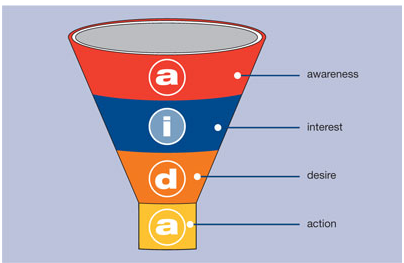
Screen grabs showing the engagement with Minerva
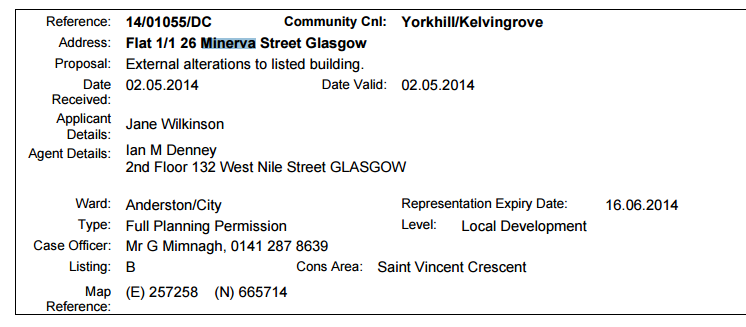
Screen grab 2

Screen Grab 3
